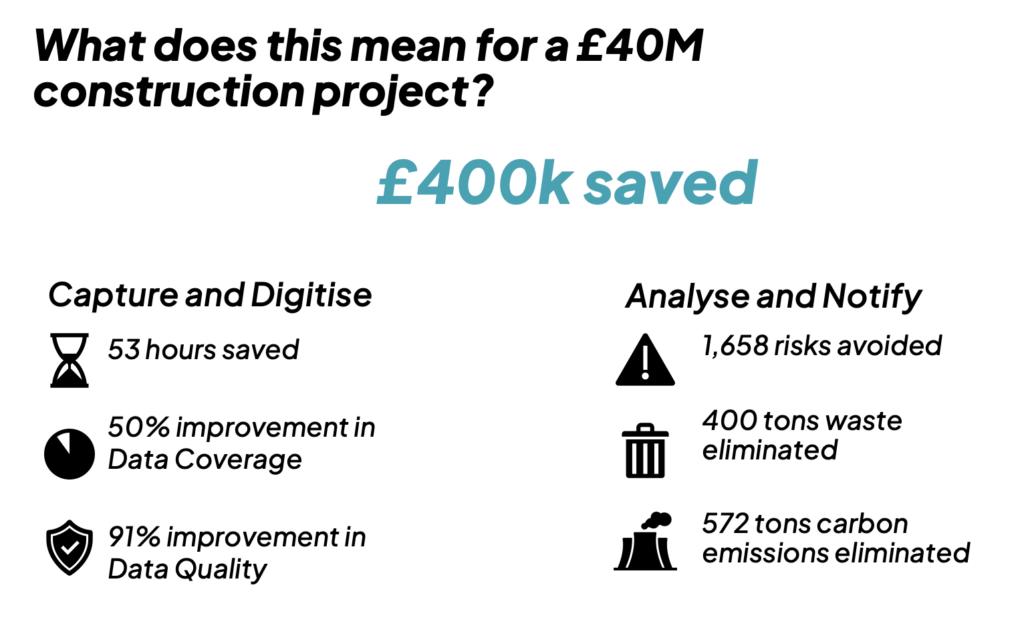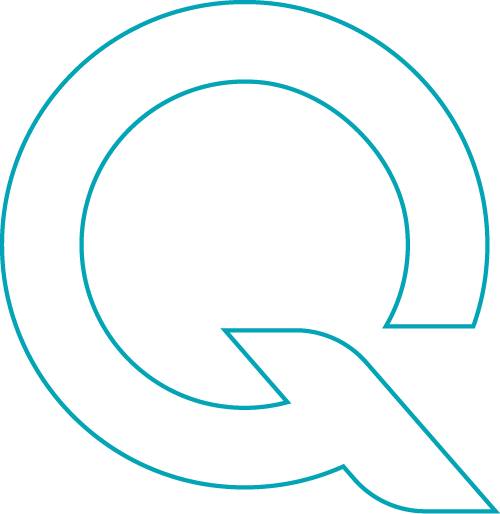
Qflow can significantly assist U.S. construction teams in achieving BREEAM USA certification by streamlining compliance with key sustainability criteria and enhancing data accuracy for the certification process.
Qflow’s core strengths support materials, waste, and carbon-related credits, with potential indirect contributions to management, pollution, and innovation categories through data automation and ESG reporting enhancements. Here’s how Qflow supports this effort:
1. Tracking and Reporting for Materials Credits (MAT03)
- Responsible Sourcing (MAT 03): Qflow automatically captures and audits material delivery data, ensuring compliance with responsible sourcing certifications like FSC and ISO14001. It flags missing or incomplete certifications, helping teams meet the 100% compliance requirement for timber and 80% for other materials, as specified by BREEAM standards.
2. Waste Management for Waste Credits (WST01)
- Real-Time Data: By digitizing waste tickets and providing centralized records, Qflow simplifies reporting and ensures compliance with BREEAM’s stringent waste resource efficiency requirements.
- Construction Waste Efficiency (WST 01): Qflow tracks waste collections – depending on the level of information included on the waste receipt, Qflow can calculate mileage, volume of waste from container types and carrier details.
- The user can also upload their waste returns information which should include the facility diversion from landfill rates.
- From this Qflow can calculate waste per 100m² of construction area.
- This data is visualised in a dashboard and color-coded to indicate potential credit achievements under BREEAM benchmarks, making it easier to optimize waste management strategies.
3. Carbon Emissions Tracking (MAT 01)
- Qflow tracks materials delivered to site. This data can be linked to Environmental Product Declarations (EPDs) through platforms like EC3 or OneClickLCA, supporting Whole Life Carbon assessments required by BREEAM. https://carbonleadershipforum.org/qflow-decarbonizing-with-photo/
- Delivery Mileage: Qflow calculates delivery distances, enabling teams to monitor and minimize transport emissions, which contributes to reducing embodied carbon—a critical factor in BREEAM’s Whole Life Carbon assessments.
- Whole Life Carbon assessments required for higher BREEAM ratings (e.g., Outstanding)
4. Credit Estimation and Dashboard Insights (MAN05)
- Qflow’s BREEAM dashboard offers insights into project performance across relevant credits (e.g., materials and waste). It provides an indication of achievable credits based on current data, helping teams prioritize actions to maximize their BREEAM rating.
- Man 05 (Monitoring and Reporting) by ensuring accurate, auditable records
By automating data collection, auditing certifications, and providing actionable insights, Qflow enables U.S. construction teams to efficiently meet the rigorous sustainability benchmarks required for BREEAM USA certification while reducing carbon emissions and improving resource efficiency. https://breeam.com/breeam-usa

Other credits we impact indirectly
2. Health and Wellbeing (HEA)
- Indirect Support: By ensuring compliant materials (e.g., low-VOC products through certification tracking), Qflow could contribute to indoor air quality criteria under HEA, though this would require alignment with specific material specifications.
3. Management (MAN)
- Operational Efficiency: Qflow’s automated data collection and compliance tracking streamline documentation processes, supporting credits related to sustainable management practices and governance.Evidence Organization: The platform’s centralized records simplify evidence submission for management-related credits, such as MAN 02 (Sustainable Procurement).
4. Pollution (POL)
- Waste Diversion: Qflow’s tracking of waste disposal locations and diversion rates directly supports credits focused on minimizing pollution from landfill use.Emissions Reporting: Transport-related carbon data aids in demonstrating reductions in indirect emissions, relevant to pollution mitigation criteria.
5. Innovation (INN)
- Technology Integration: Qflow’s use of AI for data capture and analytics could qualify as an innovative practice under BREEAM’s INN credits, particularly for enhancing resource efficiency.
6. Materials (MAT)
- Extended Applications: Beyond MAT 03, Qflow’s certification tracking for materials like FSC could support credits requiring specific material certifications or circular economy practices.

Business Benefits:
Using Qflow for BREEAM USA-certified projects offers numerous benefits, helping construction teams streamline processes, improve compliance, and enhance sustainability outcomes. Here are the key advantages:
1. Time and Cost Savings
- By eliminating manual data entry and automating compliance checks, Qflow saves significant time for construction teams. This reduces up to 80% of the administrative burdens and avoids costly rework or programme delays.https://www.gspv.vc/news/why-we-invested-in-qflow-wsbgg
- Projects have reported annual savings of approximately ~$500k, and 53 hours as well as an 60-9% improvement in data quality and coverage.* https://ukgbc.org/resources/platform-that-collects-material-and-waste-data-at-source-for-construction-teams/

* for a $50M build over 12 months.
2. Enhanced Data Accuracy and Compliance
- Qflow automates the capture and analysis of material delivery and waste data using Optical Character Recognition (OCR) and Natural Language Processing (NLP). This ensures data capture accuracy, reducing the risk of lost or incorrectly recorded information.
- It helps teams comply with BREEAM requirements for responsible sourcing (e.g., FSC and ISO14001 certifications) and waste management, ensuring alignment with credits such as MAT 03 and WST 01[4].
3. Improved Supply Chain Efficiency and Streamlined Reporting for Certification
- Qflow increases transparency in the supply chain by digitizing delivery notes and providing real-time insights into supplier compliance and payment efficiency. For example, it enabled Bouygues to increase supplier payment efficiency by 271%, helping them meet contractual commitments and secure more projects2.
- By automating sustainability reporting, Qflow reduces the cost and effort required to meet environmental certifications like BREEAM and LEED. Qflow’s integration with sustainability tools ensures seamless reporting for BREEAM USA certification across multiple credits, reducing the complexity of audits and ensuring compliance with sustainability benchmarks
4. Work Winning
- This streamlined reporting process attracts clients focused on sustainability, potentially increasing work winning opportunities and profitability.
- Delivering Whole Life Carbon assessments (WLC) is notoriously challenging. Qflow calculates captures the detailed material delivery information and transport-related carbon emissions for materials and waste, providing real-time insights that support WLC assessments. It integrates with tools like One Click LCA to streamline carbon reporting and decision-making.
- For projects aiming to meet broader environmental, social, and governance (ESG) goals, Qflow provides transparent supply chain data and integrates seamlessly with tools like Power BI. This reduces administrative burdens while ensuring accurate sustainability reporting.
5. Support for Circular Economy Goals
- By analyzing material and waste data, Qflow identifies opportunities to reduce waste generation altogether, contributing to circular economy initiatives promoted by BREEAM
- The platform tracks waste generation and disposal locations, enabling optimization of waste movements and diversion from landfills. For example, it has helped projects save thousands of kilograms of CO2 annually by identifying closer waste facilities
Qflow simplifies the path to achieving BREEAM USA certification by automating data collection, improving compliance accuracy, reducing costs, tracking carbon emissions, optimizing waste management, and supporting sustainability goals like net-zero carbon targets. These benefits not only enhance project performance but also contribute to broader environmental objectives.

